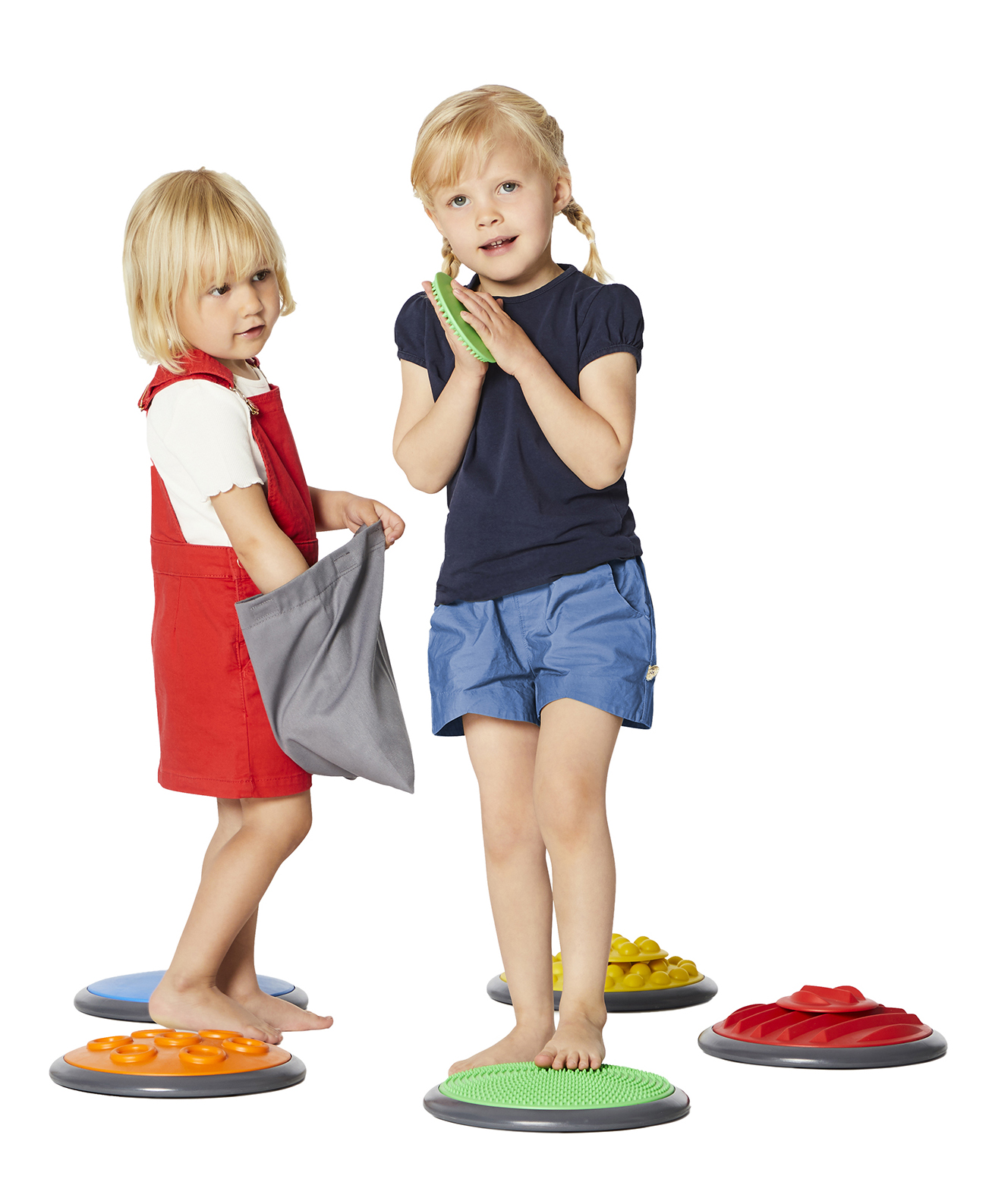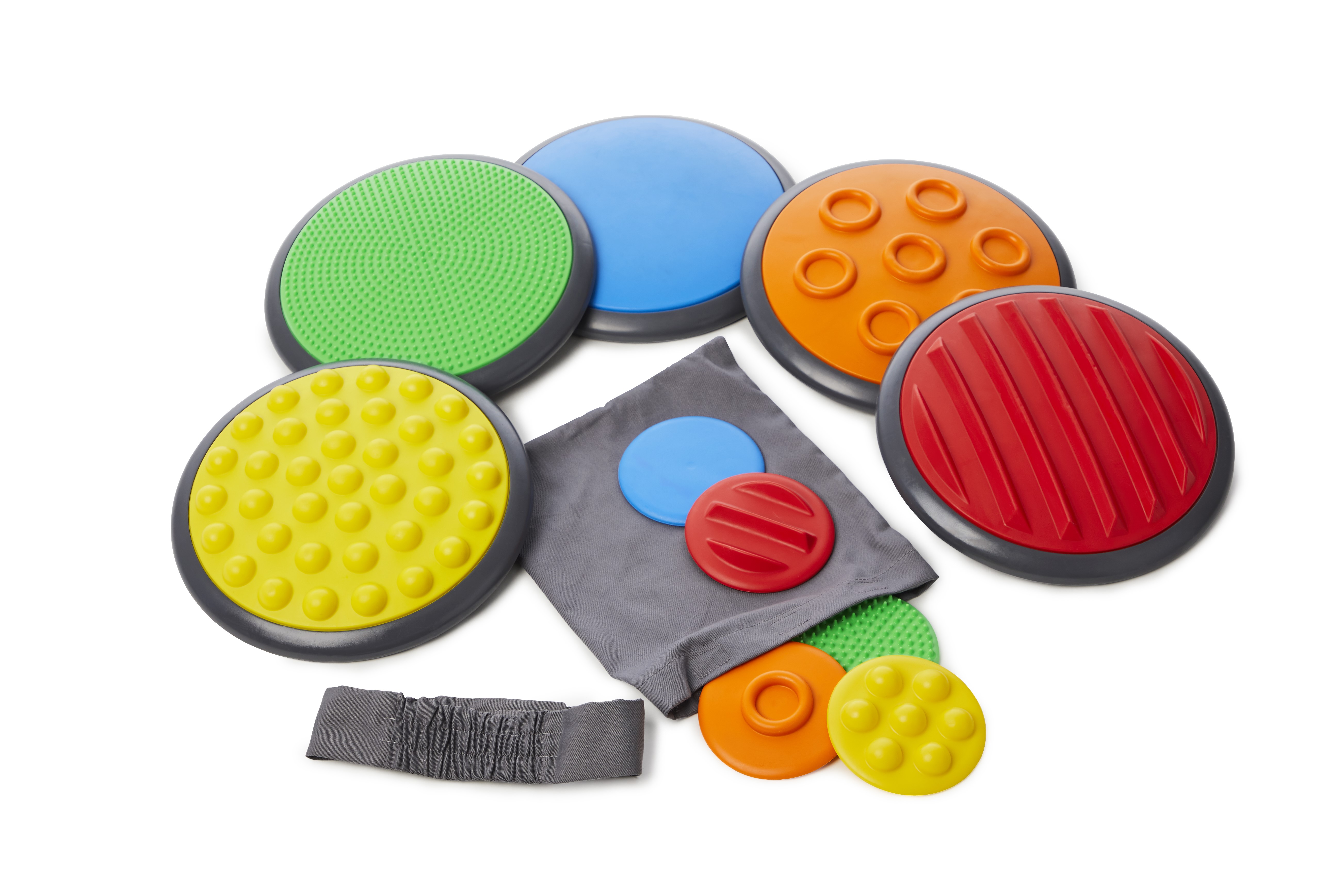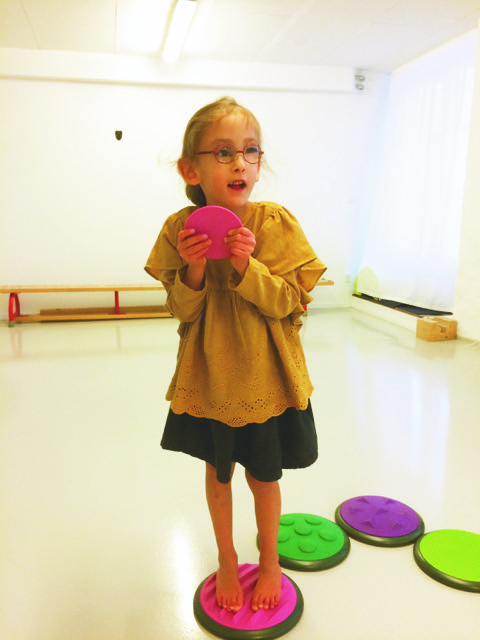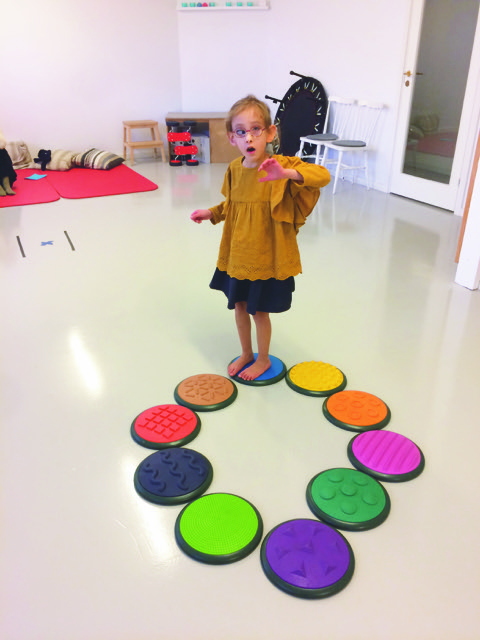
Our sense of touch resides in receptors in our skin.Touch is particularly sensitive around the mouth, in our hands and under our feet, and it is therefore here that we sense very small differences in textures and surfaces, etc.
If we walk barefoot in the dark, most of us can distinguish between an asphalt tarmac road and an earth track. We can determine the height of stairs and doorsteps. Our ability to differentiate structures and surfaces helps us to move evenly and fluidly without falling or tripping. We sense very small differences with our hands, e.g. we can feel the difference between orange and mandarin peel.
Children must train in order to develop the ability to differentiate between objects.The ability to differentiate through the sense of touch is called tactile discrimination.The more we stimulate children and allow them to touch and manipulate with everything they come in contact with in everyday life, the better they become at using their sense of touch and performing fine motor skills, such as drawing, sewing and writing. The more opportunities we give children to move on different surfaces in the natural environment, with and without footwear, the better they become at moving freely and effortlessly – without stumbling over small imperfections – on any underlay.







